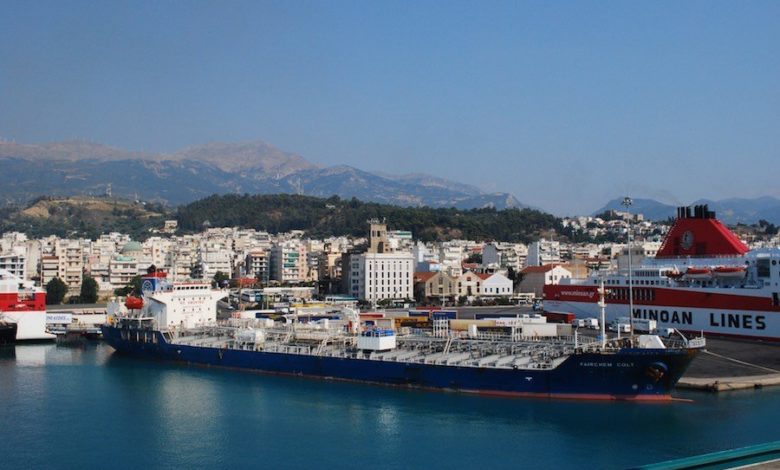Owners advised on new plays and pools in wake of EU carbon pricing regulations

The EU Emissions Trading Scheme and FuelEU Maritime can offer significant competitive advantage to owners and charterers that understand the incentives, according to new analysis from class society Lloyd’s Register and Finland-based Ahti Consulting.
Many owners and charters are looking at the incoming wave of carbon pricing schemes as a threat to their business, but new advice this week suggests the incentives and penalties can also offer wide scope for profit to those that understand them fully.
Carbon dioxide (CO2) emissions from ships above 5,000 gt in 2024 reported under the EU’s Monitoring, Reporting and Verification (MRV) system will also be included in the regional emissions trading scheme (ETS). Those vessels in scope of the ETS will need to buy EU Allowances (EUA) to cover half of their greenhouse gas (GHG) emissions to and from EU, Norwegian and Icelandic (EEA) ports, and all emissions for intra-EEA voyages and while at berth at EEA ports. In 2025, 40% of the CO2 emissions from voyages and at berth stays in 2024 will be subject to the ETS, ramping up to 100% in 2027. Just as the ETS phase-in ends there is a financial double-hit for shipowners. In 2026, the MRV will also require the reporting of CH4 (methane) and N2O (nitrous oxide) emissions from ships, with EUAs to be paid on 100% of the CO2 equivalent of those emissions, in addition to CO2, within the ETS from 2027.
The other mechanism owners are grappling with is FuelEU Maritime, which will come into effect in 2025. The regulation sets targets for reducing the yearly average GHG intensity of the energy used by a ship, or, crucially, by a fleet or pool of ships. The required GHG intensity reduction starts small, at -2% in 2025 compared to a 2020 baseline, reaching -6% in 2030 and -14.5% in 2035, through to -80% by 2050. A penalty or reward is then calculated based on the extent of under- or over-performance against the vessel or fleet’s target for the year, and the cost of low-carbon fuel that would have been needed to meet the target.
At first glance, it is easy to believe that the ETS, covering 100% of in-scope 2026 emissions by 2027, will have the bigger impact of the two mechanisms. FuelEU Maritime, by contrast, covers only a small percentage of emissions even as late as 2035. But analysis by Lloyd’s Register reveals that by that stage, the financial impact of FuelEU Maritime could already have overtaken the EU ETS. By 2050, the cost in FuelEU penalties could be six to eight times greater than the cost of buying EUAs.
“The easiest way to see the impact is to model the compliance costs next to each other,” commented Luke Shu, technical manager, maritime commercial markets at Lloyd’s Register.
Shu said that FuelEU Maritime effectively rewards early adopters by decreasing the surplus for over-achieving compliance over time, while multiplying the penalty for failing to meet the target.
There are other opportunities too for those that grasp the full implications of the EU measures. One example, according to Shu, is the potential to offset an entire fleet or pool’s penalties with just a few over-performing vessels. This opportunity arises from the EU’s decision to allow vessels with emissions verified by the same verifier to be pooled together. This can be done regardless of shipping companies, meaning it applies to the company’s fleets or to pools of vessels owned/chartered by several companies.
The ability to pool emissions penalties and surpluses has important consequences. For example, according to Lloyd’s Register a pool of ten boxships could avoid around €277m ($301m), in FuelEU Maritime penalties in the five years from 2030 to 2034 if they are joined by a single vessel fuelled with e-methanol, a saving that far outweighs the likely cost of building the methanol-fuelled containership.
“The pooling option in FuelEU Maritime means that companies investing in a zero-emission capable ship would be in a very strong bargaining position when offering to pool with other non-compliant vessels,” Lloyd’s Register noted in a market update this week, adding the caveat that charter party agreements could get in the way as well as where the charterers are responsible for buying the fuel
Risto-Juhani Kariranta, who runs Ahti Consulting as well as serving as shipping performance manager at Finnish refiner Neste, has worked out that under FuelEU Maritime’s current set-up it would be possible to have a fleet of 65 vessels using traditional heavy fuel oil (HFO) against one vessel using e-methanol. For LNG, this equation works out at five HFO-fuelled ships for every LNG-fuelled vessel in a fleet.
Looking at the research, Gavin Lipsith, a decarbonisation expert and director of Telegraph Communications, commented: “One zero emissions vessel could more than cover the penalties from a whole fleet or pool of conventionally fuelled ships – leaving a tidy profit on top of newbuild costs and the potential for operators or charterers to sell their surplus carbon performance.”
